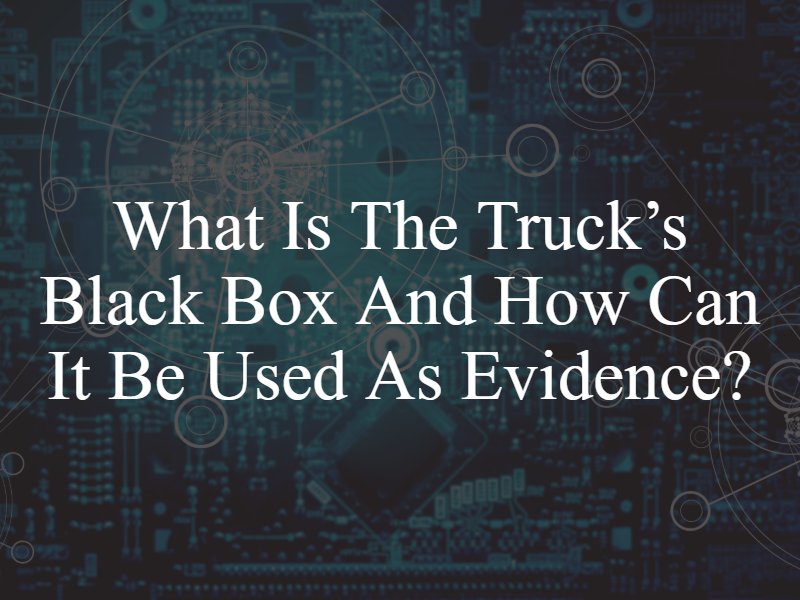What is the Truck’s Black Box and How Can It Be Used as Evidence?
Motor Vehicles Accidents - April 19, 2021
Accidents involving large trucks on the roadway can be devastating for every party involved in the collision. Unfortunately, due to the size and weight discrepancy between commercial trucks and traditional passenger vehicles, those riding in smaller vehicles often sustain significant injuries when a collision occurs. In the aftermath of these accidents, it is crucial for a thorough investigation to be conducted so that liability can be determined and victims can secure the compensation they need. Here, we want to discuss one of the main pieces of evidence used in these situations – the truck’s “black box.”
What is the Black Box?
You may be familiar with the concept of a “black box,” particularly when it comes to airplane crashes. Large commercial trucks also have black boxes, though they are more commonly known as electronic control modules (EMC) or the event data recorder (EDR). The reality is that there are various types of information that will be gathered in the aftermath of a commercial truck accident that will contain data necessary to prove liability.
The black box of a truck will store various types of information about the vehicle if it was involved in an incident, which can be defined as a collision or a near-crash incident.
What Kind of Information is on the Black Box?
The black box of a large commercial truck will usually contain a great deal of information related to the overall trip, the vehicle itself, and what was happening with the vehicle right before an incident occurred. The data recorded by a black box will vary depending on the truck or device manufacturer but will typically include a combination of the following:
- The speed of the truck right before an incident occurred
- Information about any sudden acceleration or deceleration
- Whether the brakes were applied and when they were applied
- Information about cruise control usage
- GPS location data
- The speed of the vehicle over longer periods of time
- Whether the airbags were deployed
- Tire pressure
- The number of hard stops
- The RPM between stops
- The daily, weekly, or monthly truck activity
- Whether the truck driver was wearing a seat belt
- …and more
Evidence from the truck’s black box will not be the only type of data gathered by investigators or attorneys involved in the case. In these instances, other types of evidence will need to be examined, including a driver’s electronic logging device (ELD) that keeps track of their hours of service. Additionally, a truck accident attorney will want to examine evidence of communication between the driver and the trucking company, including emails, text messages, dispatch recordings, and more.
Preserving This Evidence
It is crucial that all evidence pertaining to a truck crash be preserved. Unfortunately, as soon as a collision occurs, evidence begins disappearing. This can happen as cleanup crews begin working at the scene of the crash, and it can occur in the days and weeks following a crash as evidence is examined or even disregarded because it is seen as “unimportant.” The truth is that no evidence should be destroyed, discarded, or altered by any party after a truck crash. Attorneys in these cases will likely need to send a letter of spoliation to other parties involved to remind them to preserve any evidence that may be used in a civil personal injury lawsuit.



